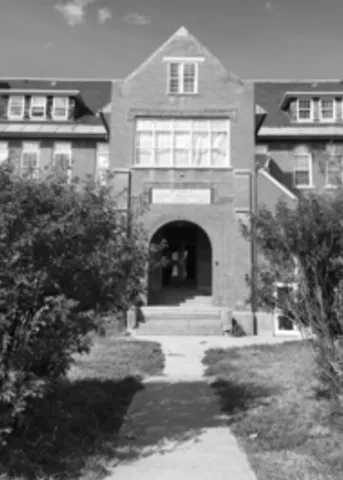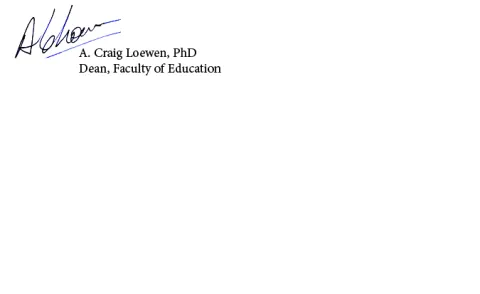Legacy 2018 Dean's Message - Dr. Craig Loewen
Print and audio translation in the Blackfoot language facilitated by Don Shade, Faculty of Education.
- Audio translation: Arnold Mountain Horse
- Print translation: Calvin Williams
The Work of Reconciliation
Ii tsi taa iis saa pi yii sooh to tohp’
Audio file
Prior to the fall semester each year, the Faculty of Education holds a week-long event we call Planning Days.
Kii moh niipoo, niitsi yis tsi ni mah sta kiiks yi kanoo ya, sik tsi kii yii sti tsi koo, iitaya toom mah nis sta kap poot taks pa.
The purpose of these days is to reconvene, to engage collaborative planning, to ensure all is ready for our new class of students, and to participate in shared professional development. This year we visited a residential school.
Iis ta nii sti mah’kii sti ii taa kanoo, ah kii tah toom ot skat ta siin, gi a gi tsi ga sti sta pi sii
nii tsi ih tsi ni mat tsa kiiks, ah gi ah sti nap pah taa pii ah kii ta toom okakii yiis ska ta sin. Gi’ nook iistoyii nii tsi iikis soo wat toop pi nan mi Ninastako itt skini mat tah koop.

Photo of St. Paul's Residential School taken by Dr. Craig Loewen
I will probably always remember my visit to St. Paul’s Residential School. It was my first visit to any residential school. The building had been renovated to make it usable space as apartments, but it was the outside of the building that moved me.
Nii ta yii som mis tsi niip, ni to tsi so wa toop, Ninastako, taht sti kah to too”, Mi nah poo iss, ah kap pa sto tsip, gi a kahn ni stapii yii to wah koo mat toop, gi mii sahsti ni tsi toh iis sin noo koo.
At one point I was all alone on the sidewalk leading up to the front doors. Others had wandered away, and I stood there in prairie silence looking at the building itself. Other than the engraved name above the door, there was nothing about the building that spoke of either home or school … or gentleness … or acceptance. The building was cold, austere, and functional. It had a purpose, but that purpose did not include the best interests of the people inside — evident in the fact that all these schools were built with the same plan. It was easy to imagine frightened children filing up the walk and through the front doors, unsure of what lay ahead. For just a moment I was one too, and I took a picture to remember the moment.
Niit tsi tsi sah ya poo, geh is sto yaa mii soop gi mi kii stim. Nii sti toh poo kaap oht ta kii maaks yii sta ahp poo waak kaa, nii tsi ta pa poois, mah tsi kiis tsa pii, nii tahs sah tsip nii Ninastako. Mah too kiit stip ah kiit ani stap pii ii ts kin ii math tsa koop tsat ookonoop. Mah to iikin nap pii, tsat ahkoo miin ta pii siin. Mi nah poo is sinn, iihsto yii, gi mah to soogapii. Iis tsi sti, gi maht to gi tahp sookapii gin ii tsi iih sti p stahpii, Iss ka na nah koo, nii tooy is sta pi’ pi sto tsi p. Ah kii tes kaht tsi p, pookaaks iss kiit tsa yaa, ah yah sti poo yii, iis sti tah saa kii, niis sti kii stiim, ma tes sti niim ooh taa kaa nis ta piis. Nii sti noos noh kaat yii sti nah pooyii, niit sti som mes sti niip nii ta tah poois.
The building stands today as a symbol of mistakes made, of prejudice, and the way abuse echoes for generations thereafter. It reminds us of the need to seek out reconciliation. It stands too as proof of the importance and value of the work we do as teachers.
Nii napooyis sah kaa poyii, is sti sti, ah kii tahs sti niip ni pa tap pii, gi iss sti kah nii kiim staan, gi niit to sti sto wat pi nii tsi pookakiiks it ski ni mah sta kiis. Ah kis sti niip nii tahk sap pii sto stiip ah ka tsi tahk poo kaap ta kiim mappi. Gi is sti ni maht sta kiiks mah nis soo kap poo takspii.

